There’s something uniquely special about Great Danes – they’re big, muscular dogs that are often referred to as the gentle giants of the canine world. But despite their docile appearance, many Great Danes are scared of everything!
Great Danes are not actually supposed to be timid or fearful, but unfortunately many of them are.
In this blog post, we’ll explore some of the reasons why these dogs might be so fearful and offer some tips for helping them overcome their fears.
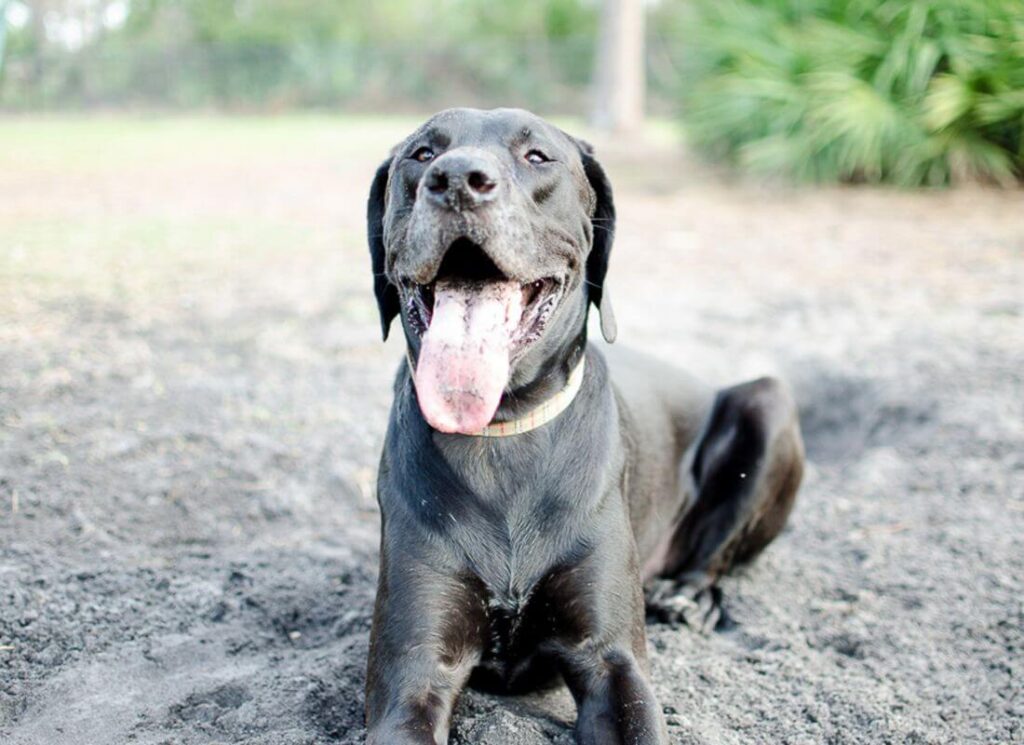
Why Are Great Danes Timid?
Unfortunately, many people have come to believe that all Great Danes are timid and scared of everything, even if there is no real evidence to suggest this.
It’s true that some Great Danes may be more anxious or skittish than other dogs, but every dog responds differently to different situations.
Genetics can play a role in a dog’s temperament, and some Great Danes may inherit a predisposition to anxiety or fearfulness. Early socialization is critical for all dogs, and if a Great Dane doesn’t receive adequate exposure to different people, animals, and environments during their crucial developmental stages, they may become more apprehensive.
Additionally, traumatic experiences, such as loud noises or frightening encounters, can contribute to fear in Great Danes, as they can in any dog breed. It’s important for Great Dane owners to provide a supportive and nurturing environment, along with proper training and positive reinforcement, to help their dogs build confidence and overcome their fears.
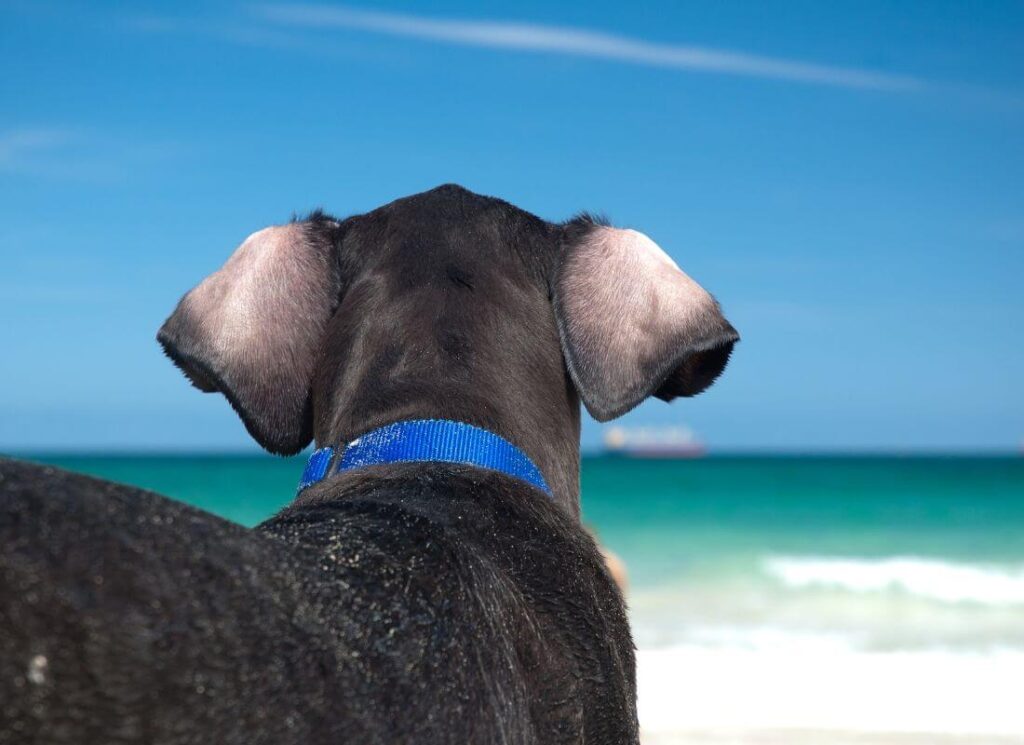
The Great Dane Breed Standard
The Great Dane breed standard describes the ideal physical characteristics and temperament of a Great Dane, including their fearlessness.
If you look closely at the breed standard, you’ll find that “courage and vigilance” are some of the most important characteristics of this noble dog.
Here is a direct quote from the Great Dane Club of America’s written standard for Great Danes:
The Great Dane must be spirited, courageous, always friendly and dependable, and never timid or aggressive.
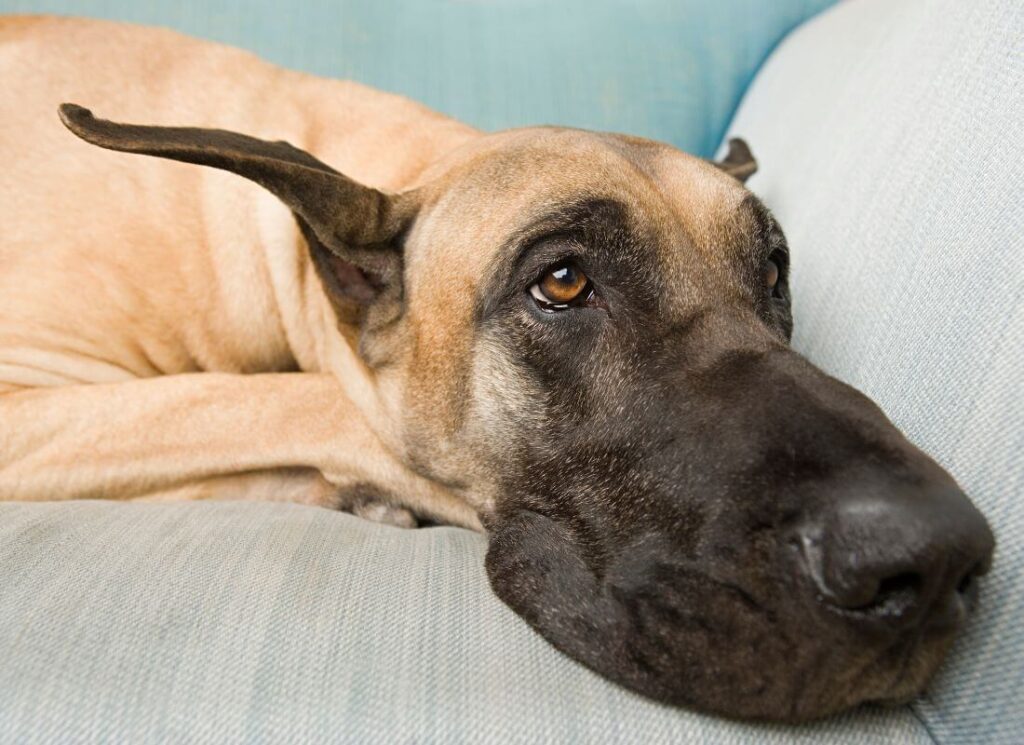
Fearful Great Danes Everywhere
So, if the written standard states that the Great Dane should be a confident, fearless, and friendly dog, why do so many people believe or notice otherwise?
Many Great Dane owners have dogs and puppies that are experiencing excessive fear and anxiety, aggression, poor confidence, and issues with separation.
There are several things that lead to this (which we will dig into below), but the biggest culprit driving the belief is social media.
People are sharing and normalizing these traits, and it’s having a significant impact on the public perception of Great Danes.
Have you ever seen somebody in a social media group who is upset or amused that their dog is terrified of strangers, objects, or even simple things such as a wrapped present?
Several dog owners will often chime in and say things such as:
“That’s just a Dane thing!”
“Totally normal! These dogs are such chickens!”
“Danes are afraid of everything, it’s just how they are.”
I hate to break it to you, but no, this is not a “Dane Thing” and no, Danes are not actually fearful timid chickens.
At least, they aren’t supposed to be.
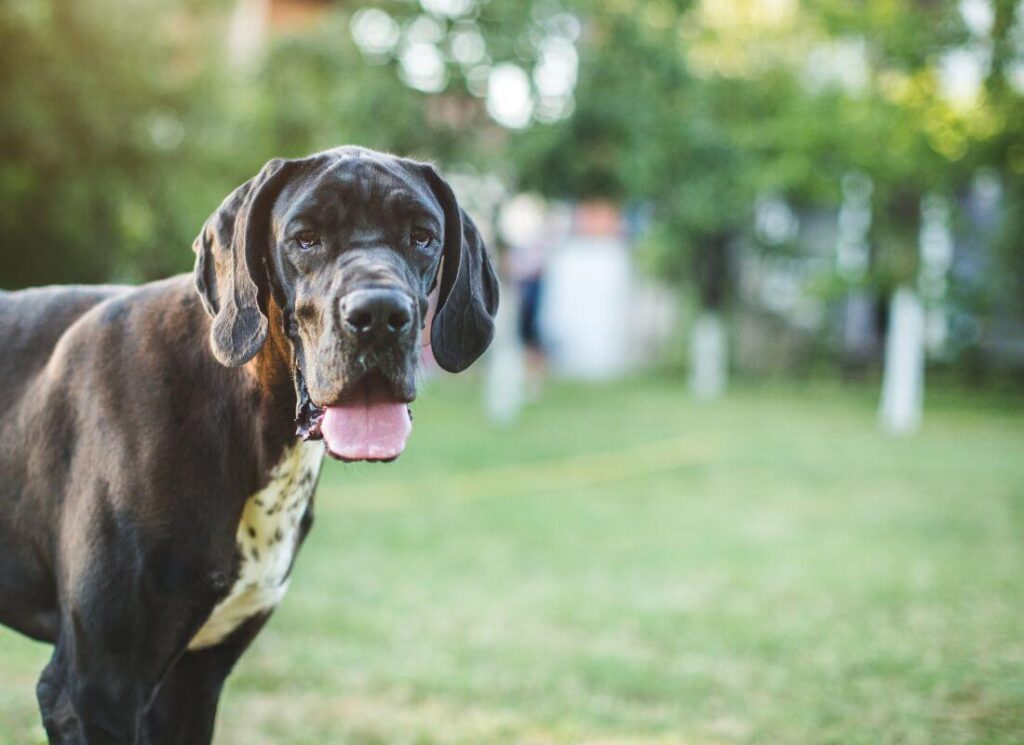
Why is my Great Dane Afraid?
Below, I’m going to list the factors that contribute to fearful and anxious behavior in Great Danes. How many of these things can be avoided?
Genetic Predisposition
The genetics of temperament is not yet well understood, but there is enough research pointing to the fact that the pedigree strongly impacts fearfulness and poor behaviors in Great Danes.
Great Danes who suffer from separation anxiety, aggression, fear, resource guarding, and timid behavior are very likely to pass those traits onto their offspring.
Researchers have even identified a specific gene variant linked to fearfulness in Great Danes.
Unfortunately, these dogs will also be more prone to bloat, a painful and extremely deadly condition in large and giant breed dogs. There are definitely genetic causes behind fearfulness, bloat, and temperament that need more research.
One of the best ways to avoid this occurring is to never support breeders that aren’t heavily invested in the genetic background, OFA health testing, structure, and health of the dogs being bred.
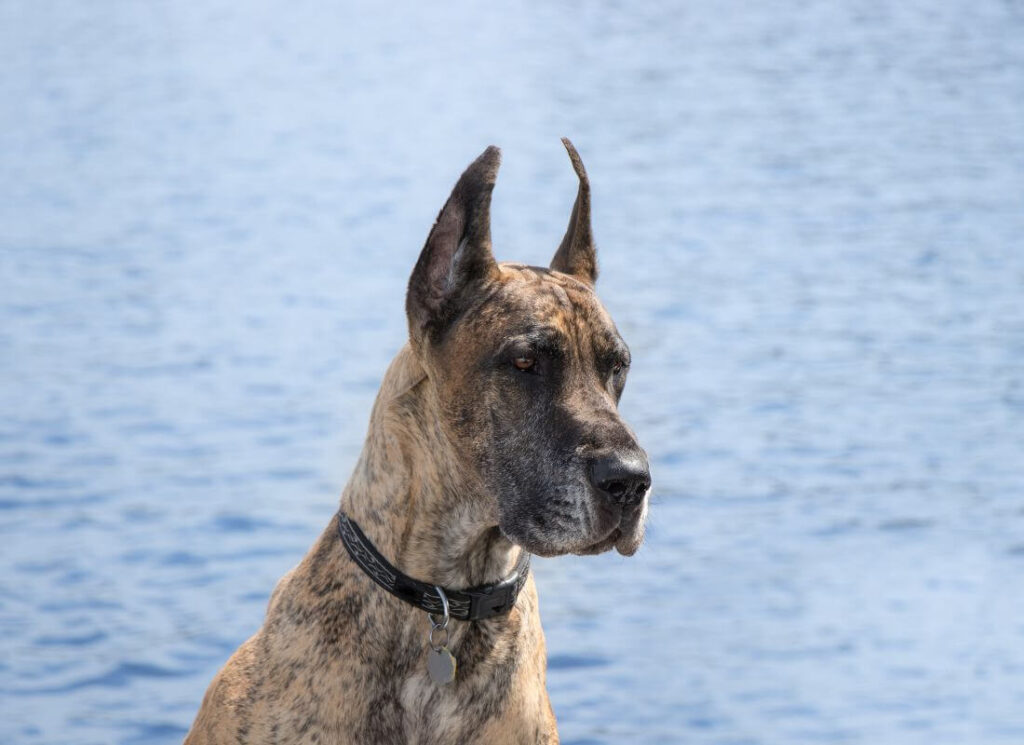
Environmental Factors
The environment in which a dog is raised has a tremendous impact on its behavior and fear levels. It is believed that dogs with a genetic predisposition to fearfulness, anxiety, and aggression may be more susceptible to damage caused by these factors.
This is why some dogs can experience traumatic events and still be calm, sweet, and loving while other dogs will become extremely reactive and fearful after a mild but stressful everyday occurrence (such as a veterinary visit or being left home alone).
Great Danes who are exposed to loud noises, sudden movements, or rough handling when they are young may be more likely to become fearful than those who are not. There is a huge difference between positive exposure to things in the environment, and flat-out scaring a puppy for life.
These environmental factors can include anything from thunderstorms to being scolded. For some dogs, hearing a loud car zoom by just once is enough to cause them to fear cars for life.
These dogs may also be more prone to developing separation anxiety and becoming overly attached to their owners, too.
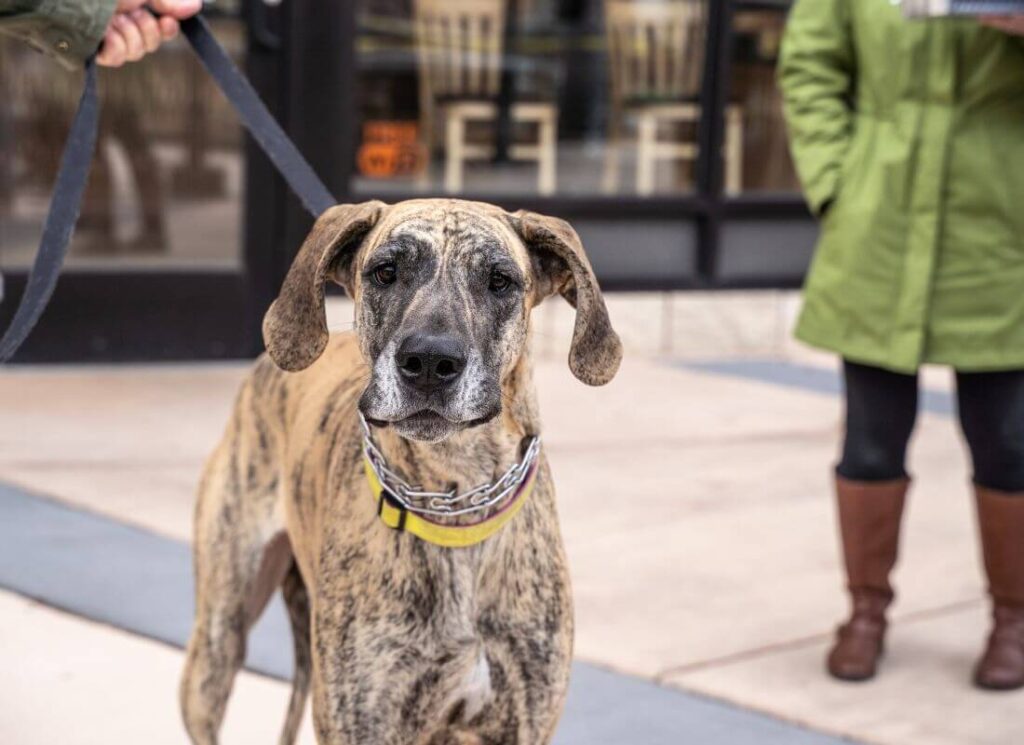
Negative Experiences
Dogs living in shelters, or who have been rescued from situations such as puppy mills, often come with a multitude of behavioral issues. Some of this is because of the aforementioned genetic link, and some of it is because they weren’t offered the gentle, positive early socialization that they needed in life.
In some cases, the fear stems from past traumas or abuse. These experiences will stick with a dog and can cause them anxiety and fearfulness that they will live with for their whole lives.
A single dog attack, a bad experience with a child, or a yank of the leash on the neck can be enough to cause a dog to become fearful of certain people, animals, situations, and environments.
This is not to say we should coddle our dogs and prevent all forms of stress or potential negative experiences!
As a matter of fact, previous studies show that small amounts of stress can actually build confidence. It is important to be aware of our dog’s degree of fear and make sure to provide them with gentle guidance and encouragement when possible, not coddling.
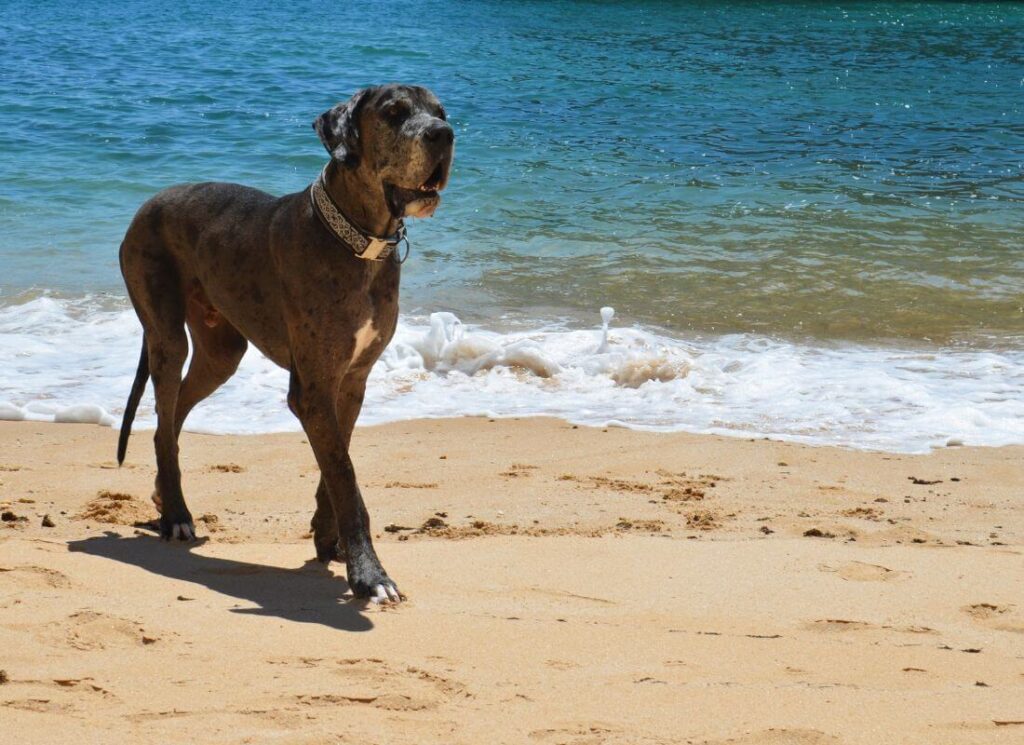
Bad Dog Training Methods
This is one of the most commonly overlooked reasons why Great Danes are often scared of everything. When a dog is trained using punishment, fear, intimidation, or too much physical restraint it can become fearful and anxious.
Positive training techniques should always be used with Great Danes to ensure that their relationship with humans is based on trust and respect.
Outdated “alpha” and “dominance” based training methods are largely to blame, as those techniques rely on heavy, harsh handling and physical force. Reality television, in other words, is a terrible place to get training advice (Cesar Milan, I’m looking at you!).
We never recommend the use of pinching, tapping, thumbing, nosing, shoving, rolling, pinning, scaring, stomping, hovering, or cheap shock collars to train Great Danes.
For modern, humane training methods, find a dog trainer who uses balanced + positive techniques focused on rewards, great experiences, and happy body language.
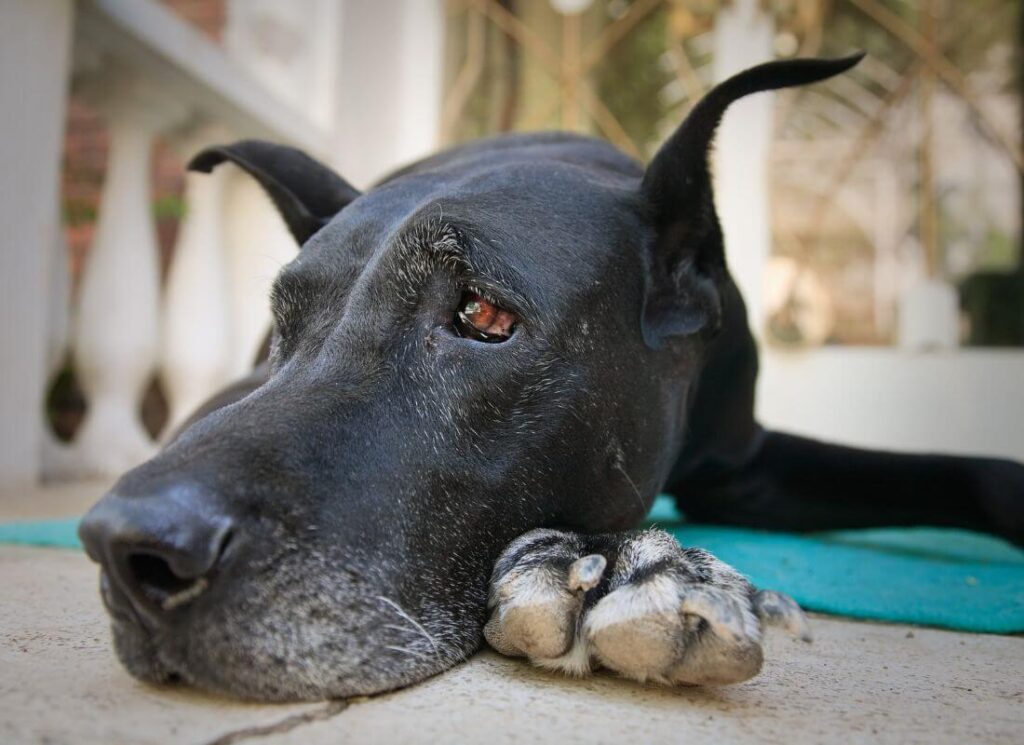
Leash Tension and Poor Handling
This is a common cause of reactivity and anxiety in Great Danes, especially while on a leash!
When a dog pulls, they experience tension around its neck, face, or chest. This tension increases their frustration level, which can cause increased reactivity and even aggression while on a leash.
Even the most gentle, well-tempered dog is susceptible to this.
Therefore, it is important to teach the correct behavior and avoid excessive jerking, tension, or yanking when walking your dog; especially if they see another dog or human on the path nearby!
Communicating to your dog with vocal cues (such as “easy”, “with me”, or “look”) and rewarding that behavior is much more effective than relying on physical restraint and force. Pair this with the gentle on/off pressure from a properly fit prong collar to teach positive loose-leash walking skills.
Finally, dogs have an innate sense of body language that can greatly affect how they interpret a handler’s attitude. If their owner or handler is anxious or fearful, the dog will pick up on those emotions and become anxious as well. It is important to remain calm when handling Great Danes in order to communicate that there is nothing to fear.
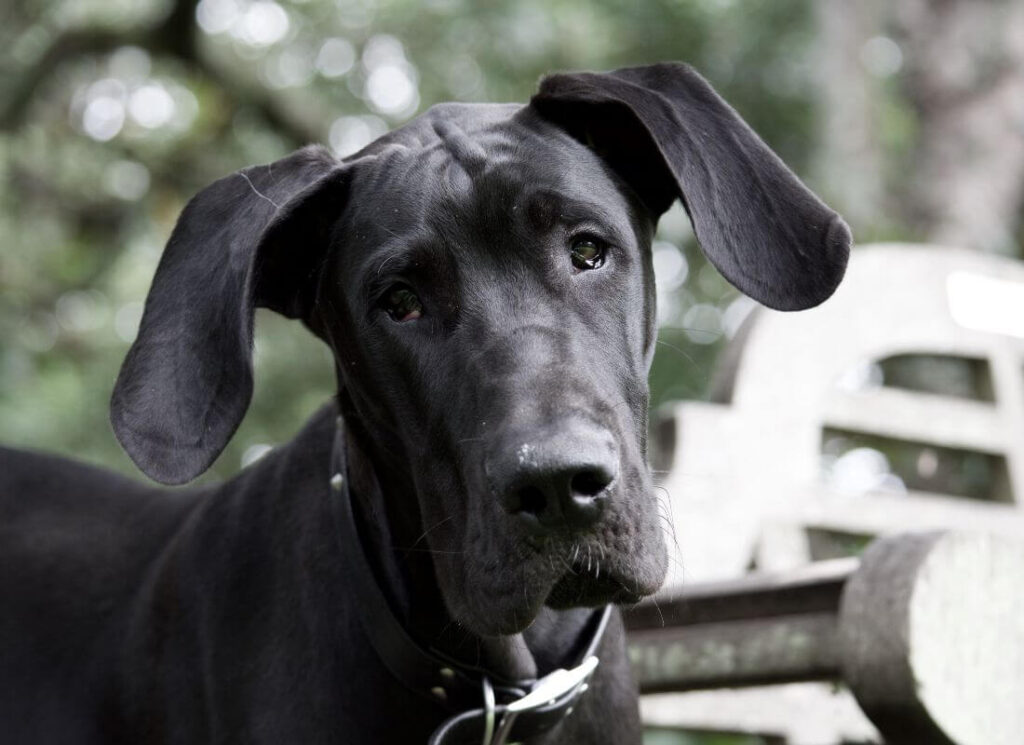
Poor Socialization
A lack of socialization can cause Great Danes to develop fear and anxiety about new people, places, animals, and situations.
It is important for the puppies to be exposed (not forced) to as many sights, sounds, textures, smells, and people as possible in order to give them a good start in life.
Bringing an overwhelmed, scared puppy into a pet store or around rude dogs in an uncontrolled situation (ehhh…the dog park) is not socialization; that is a bad experience. It’s important to advocate for your puppy.
Good breeders are using programs such as Puppy Culture and ENS to develop strong and resilient dogs by taking advantage of the early stages of development. Brain development in the first weeks of life is incredible and every experience that the puppy has at that stage can have a significant impact on temperament.
Giving Great Danes a good start in life with responsible breeding, positive training, and proper socialization methods should help prevent them from being scared of everything!
We’ve created a well-loved Great Dane puppy socialization guide for reference. You can view it here:
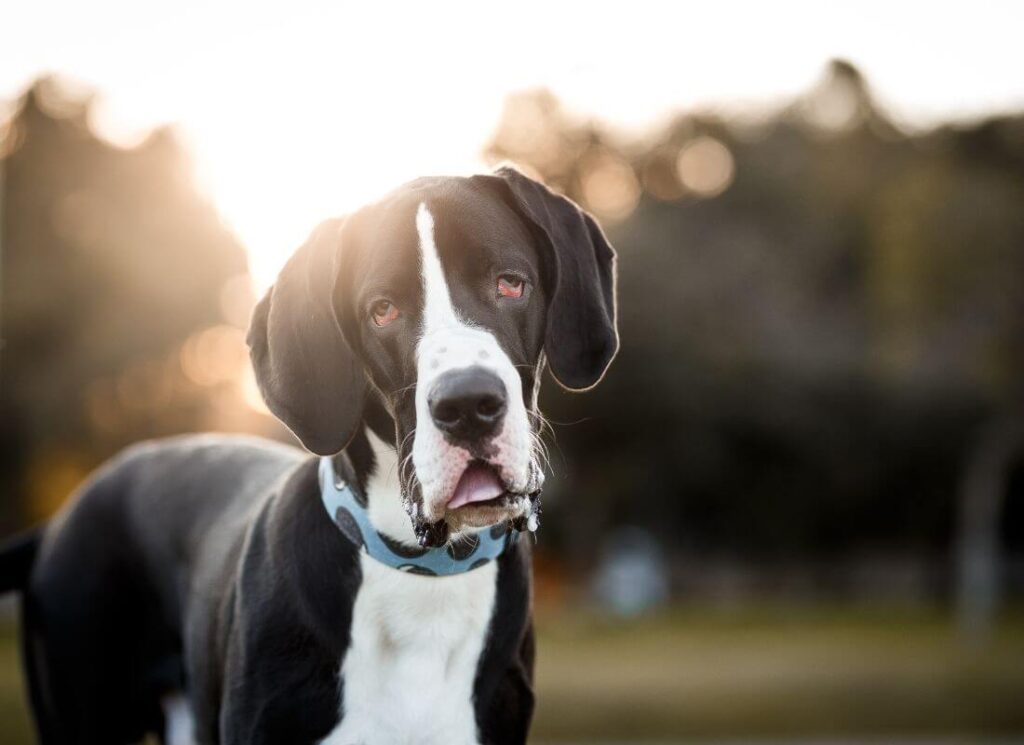
Pain and Medical Conditions
Last, but not least, we have to mention that pain and medical conditions (including thyroid disorders, arthritis, heart conditions, poor conformation, and even overgrown nails) can affect how a dog views and interacts with the world.
Your veterinarian can rule out any physical ailments or conditions that could be causing the fear response in your dog. Even something as simple as a change in diet can make a big difference in how a dog looks, feels, acts, and behaves!
Even puppies can be suffering from medical conditions and pain that cause them to be nervous, anxious, timid, frustrated, or aggressive.
Always talk to your veterinarian if your dog isn’t happy, healthy, energetic, and robust.
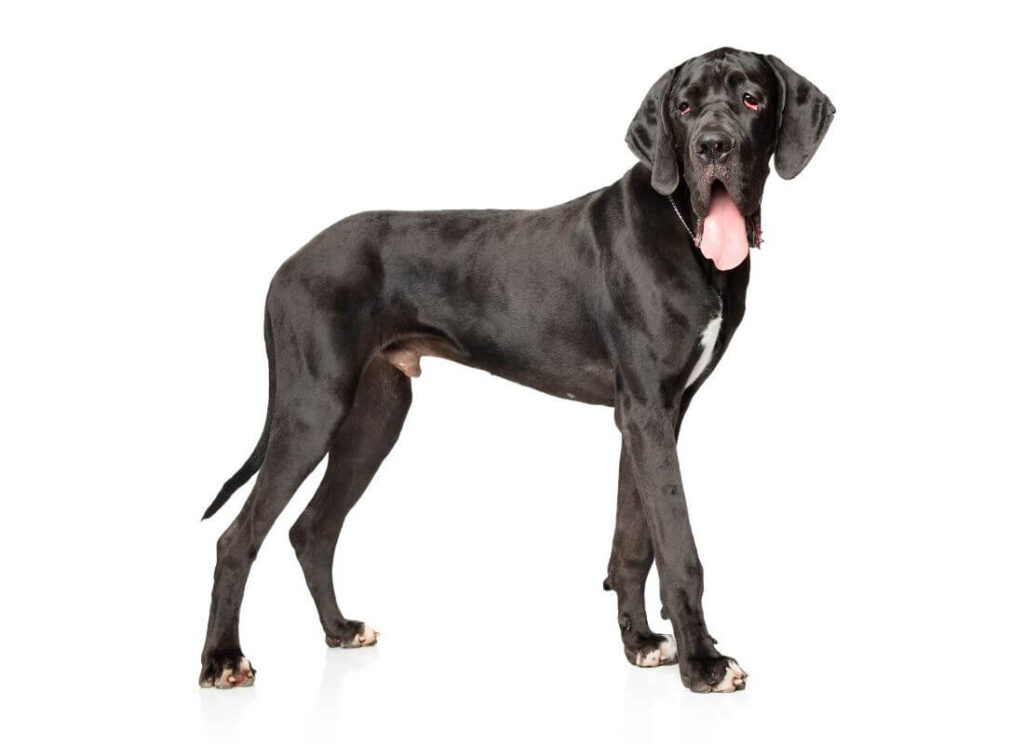
How do you Calm a Scared Great Dane?
If you have a fearful, timid, or reactive Great Dane, the key is to provide them with positive experiences.
Focus on building trust and strengthening your bond – working through a few simple obedience exercises (or learning new tricks) can be a great way to bond with your pup and give them something to focus their energy on.
It’s important to set up successful experiences for your dog, too.
When a dog is practicing fearful and timid behavior on repeat, they are actually reinforcing (practicing and worsening) that behavior and those emotions.
Set your pup up for success, avoid negative experiences and punishment-based training methods, and look for signs of fear (hiding, averting eyes and ears, trembling or shaking).
Never coddle your dog, either! It’s important to recognize that your pup needs help, but it’s also important to be strong and confident in your leadership.
Many times, by showing confidence and calm indifference yourself, you can naturally deescalate the fear and anxiety that your dog is feeling.
Throw in a little bit of positive reinforcement and with time, your dog can learn that great things and opportunities are all around them. A quality training program can be the difference between a scared and timid pup, to an outgoing and confident dog.
For information on how to find a good professional trainer to help you with your dog’s excessive fear, anxiety, or aggression, check out this article on how to choose an ethical professional.
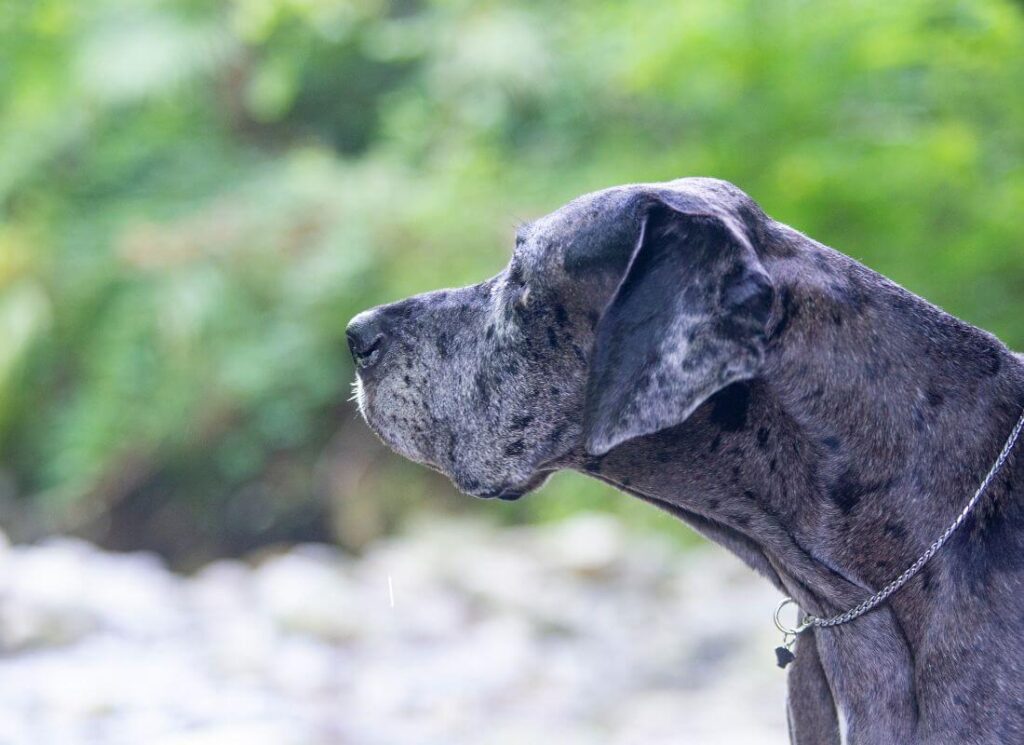
Can a Fearful Dog be Cured?
A lot of people believe that a fearful dog can be “cured” with enough love and attention. Unfortunately, this isn’t always the case.
Dogs can learn to cope better and develop more confidence over time, but many times the fear is still likely to remain at some level. It’s important to remember that fear was an evolutionary adaptation for our dogs – in the interest of survival, it’s quite normal for them to be cautious of some things!
It’s our job as owners and guardians to help them learn to live with and cope with that fear, rather than trying to “cure” it away.
It’s also important that we stop spreading misinformation. It’s not a “Dane thing” to be fearful, unstable, and flighty.
Don’t Make This Mistake
Showing a dog something that they are scared to elicit a funny (read: fearful) reaction for social media is not cute.
This is extremely poor handling and is wildly unfair to dogs who aren’t sure how to cope with the world in a healthy way.
Don’t do this. Great Danes are extremely susceptible to bloat, which is often-times brought on by stress and anxiety!
Do you have a scared Great Dane?
If you have a scared or anxious dog, know that you are not alone. Many other dog owners share your struggles!
Reach out to your veterinarian, an experienced trainer, and professional resources for help in working with and managing your pup’s behavior. Do some research into positive behavior modification techniques such as B.A.T. 2.0 by Grisha Stewart as well.
It can take time and patience to get to the bottom of why your pup is so scared, but doing so will be better for their health and happiness!

Leave a Reply